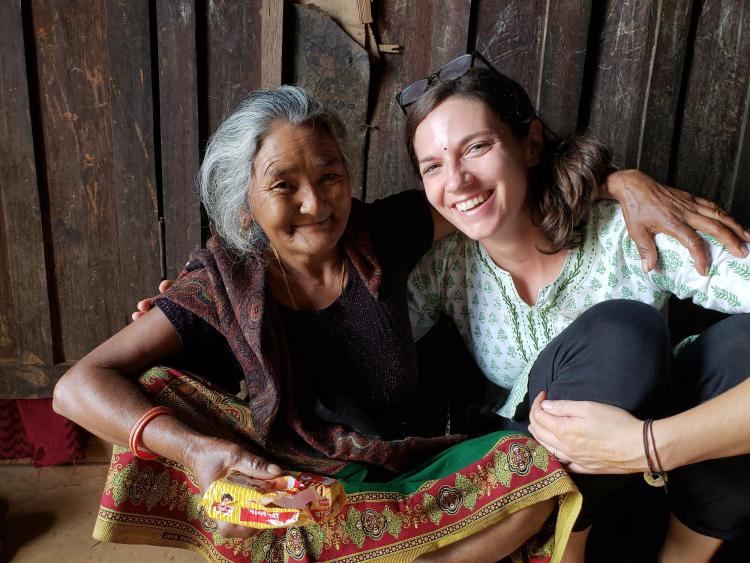CU Boulder PhD candidate Tracy Fehr’s research examines the intersecting identities limiting Nepali women’s access to disaster relief funds following the devastating 2015 earthquakes
The devastating 2015 earthquakes in Nepal affected nearly 30% of the country’s population, causing an estimated 9,000 deaths, displacing 2.8 million people and destroying or severely damaging more than 800,000 homes.
In the years following the disaster, entrenched cultural, political and economic inequalities and social practices meant post-disaster recovery did not happen uniformly among those affected. Nepal’s National Planning Commission even acknowledged in a 2015 report following the earthquakes that differentiated gender norms and divisions of labor for women in Nepal—including a narrow asset base, the burden of domestic labor, limited access to economic resources and a lack of alternative livelihoods—could lead to a longer and more difficult recovery.
For many widows, or single women, in Nepal’s mid-hill region, existing social stigmas were often exacerbated following the earthquakes.

CU Boulder researcher Tracy Fehr (right) with a single woman who lives in Gorkha, Nepal.
However, newly published research by Tracy Fehr, a University of Colorado Boulder PhD candidate in sociology, shows that the complexities and contradictions of post-earthquake recovery for single women in Nepal is only part of the story. With more than 125 caste and indigenous nationality groups, Nepal is one of the most diverse countries on earth. And the widows’ experiences reflect that heterogeneity.
Despite housing reconstruction relief often being predicated on citizenship and property ownership, precluding many single women, the post-earthquake development context “provided an opportunity to create local women’s centers that provided space for single women to unite in a collective identity, facilitating a shift of longstanding stigma and an emerging renegotiation of what it means to ‘be a widow’ in Nepal,” Fehr wrote.
Observing inequality
Following the devastating earthquakes in spring 2015, Fehr volunteered with Women for Human Rights Nepal (WHR), an non-governmental organization (NGO) helping single Nepali women—including widows and women who are separated, divorced, are unmarried after the age of 35, or whose husbands are disappeared—gain socio-cultural, economic and political rights. The organization also provided post-disaster relief and support for single women across the country.
During her time in Nepal, Fehr observed how difficult it was for many single women to get relief funds. And she noticed that their access to resources often depended on the intersection of various aspects of their identities.
Motivated, in part, by what she learned and observed volunteering with WHR, Fehr returned to Nepal in 2018 as a graduate student and researcher to formally study how social factors intersect to inform Nepali widows’ post-earthquake experiences.
“I think there’s this monolithic story of widows in Nepal as victimized and non-agentic,” she says. But through 33 interviews and three focus groups, Fehr’s research told a different story—one that was more nuanced and more accurate. “In fact, each woman’s experience is dependent on so many different intersecting identities and social factors beyond marital status,” she explains.
